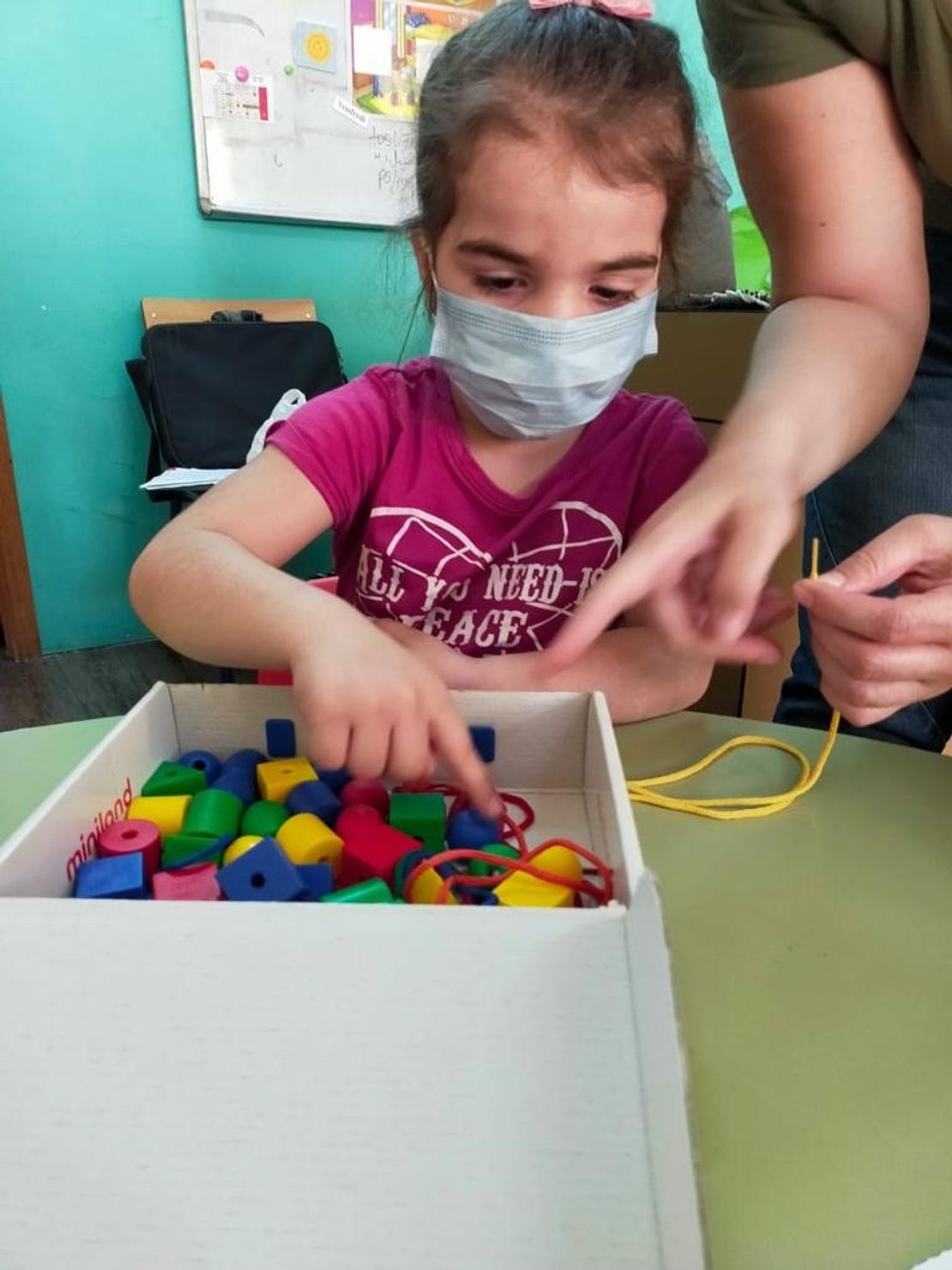Christina is four years old. She has language difficulties and a mild intellectual disability. Thanks to Humanity & Inclusion (HI), she is getting an education adapted to her needs.
Her family’s daily life
Christina lives in Lebanon, she is four years old and is the youngest of three siblings. Her family lives in poverty, their income from the hummus factory is not enough to support them.
When she was two, Christina's mother, Rouchim, noticed that Christina was not communicating in the same way as her siblings at the same age. She became concerned and started looking for answers and available services.
The family contacted GENIUS School, a special school for children with disabilities. Christina's initial assessment confirmed language difficulties and a mild intellectual disability. She communicated only by pointing, eye contact and hand gestures.
Thanks to HI, Christina is now benefitting from a range of adapted services
Christina was then enrolled in the "Inclusion in special education of children with moderate and severe disabilities" project, implemented by HI in partnership with GENIUS School. The program is funded by the King Salman Humanitarian Aid and the Relief Center (KSRelief), in partnership with UNICEF.
The program offers weekly rehabilitation services such as speech therapy, psychomotor therapy, psychological support, parental guidance, classroom assistance and support.
Remarkable progress and a better future
 Thanks to the support provided by a multidisciplinary team, Christina's communication skills are improving. The project has also had a positive impact on her daily activities and social inclusion. Today, Christina is able to communicate her thoughts and needs and understand instructions, which is boosting her self-confidence and social skills.
Thanks to the support provided by a multidisciplinary team, Christina's communication skills are improving. The project has also had a positive impact on her daily activities and social inclusion. Today, Christina is able to communicate her thoughts and needs and understand instructions, which is boosting her self-confidence and social skills.
"Last year we were desperate and sad. I thought my child would never talk and never be able to go out and play with all the other children or even be accepted by others. Now our life has changed, we are very happy. Christina is able to communicate with us.”
Rouchim, Christina's mother
Christina's parents strongly believe in her right to education and will continue to advocate for equal access to services.



 Thanks to the support provided by a multidisciplinary team, Christina's communication skills are improving. The project has also had a positive impact on her daily activities and social inclusion. Today, Christina is able to communicate her thoughts and needs and understand instructions, which is boosting her self-confidence and social skills.
Thanks to the support provided by a multidisciplinary team, Christina's communication skills are improving. The project has also had a positive impact on her daily activities and social inclusion. Today, Christina is able to communicate her thoughts and needs and understand instructions, which is boosting her self-confidence and social skills.
